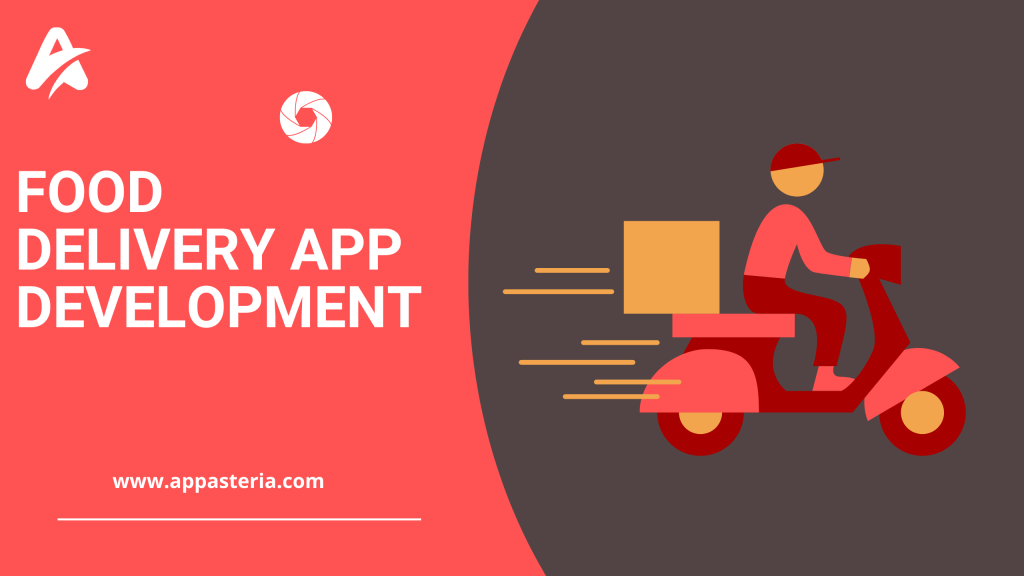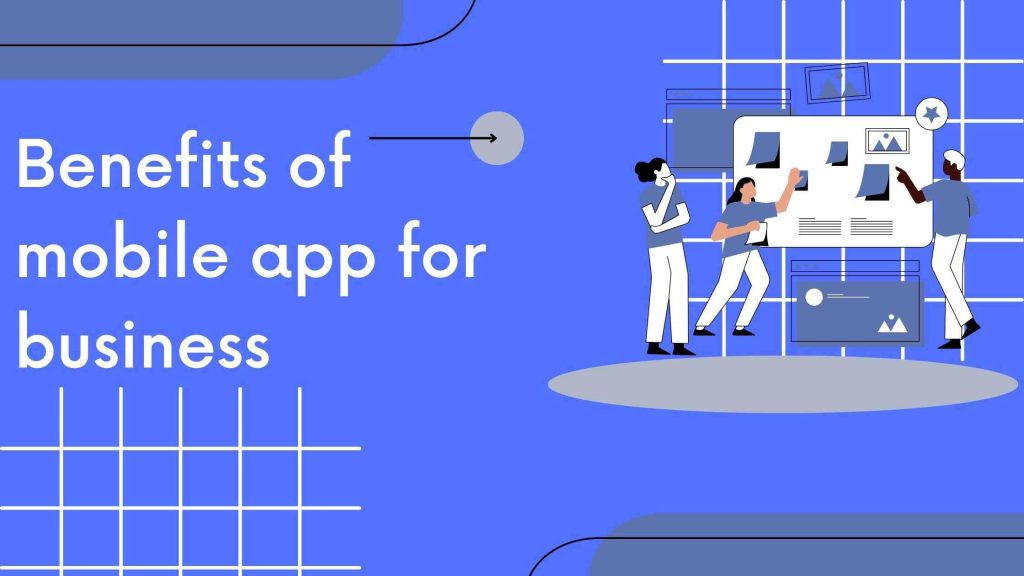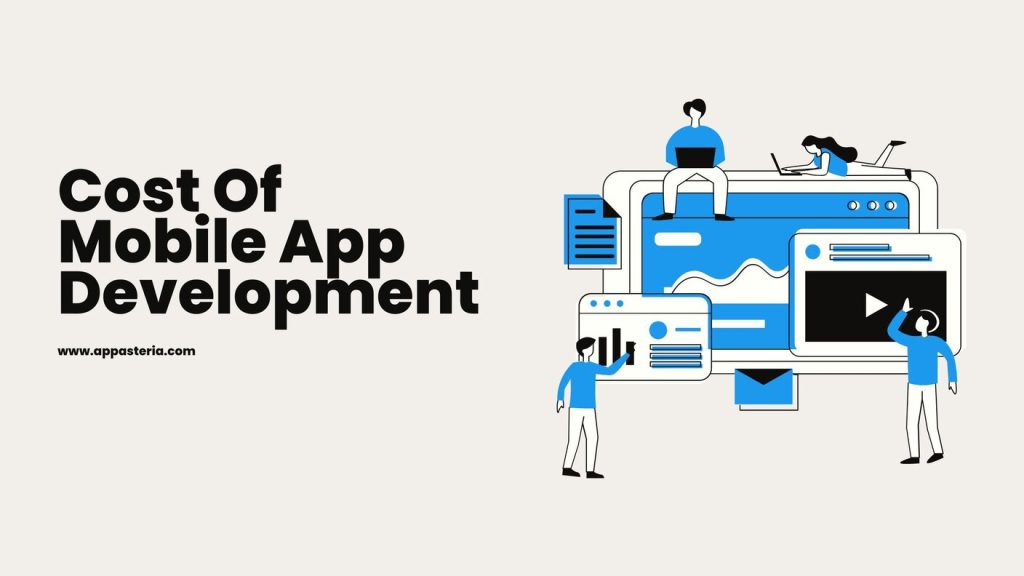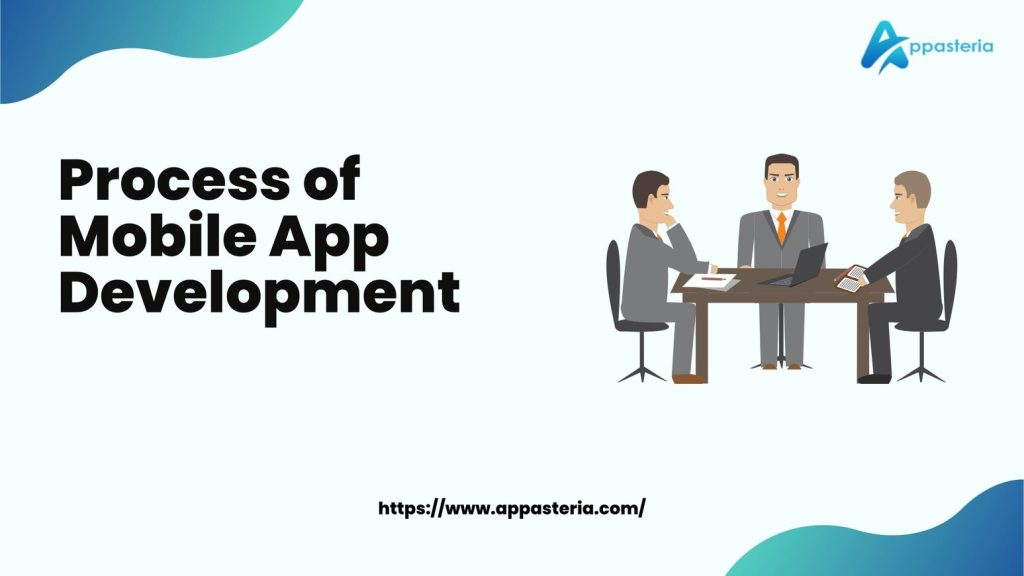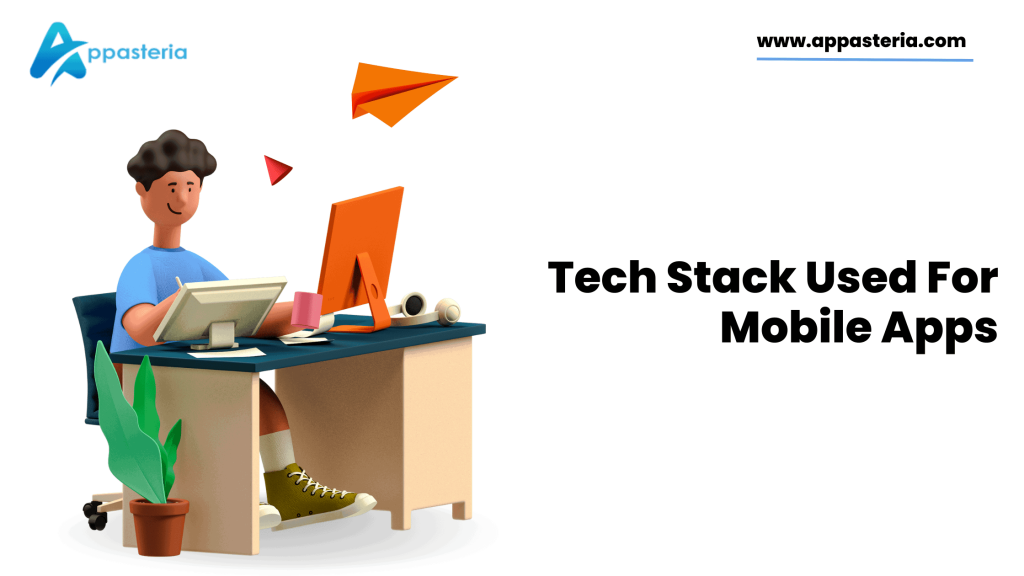Food delivery has become necessary for many of us, especially with the pandemic and safety regulations in place. This has resulted in a surge in the popularity of apps like Uber Eats. To savour their preferred cuisine, customers place an order and await a courier to deliver it to their doorstep. The on-demand application market has witnessed a remarkable revenue and popularity increase over the past few years.
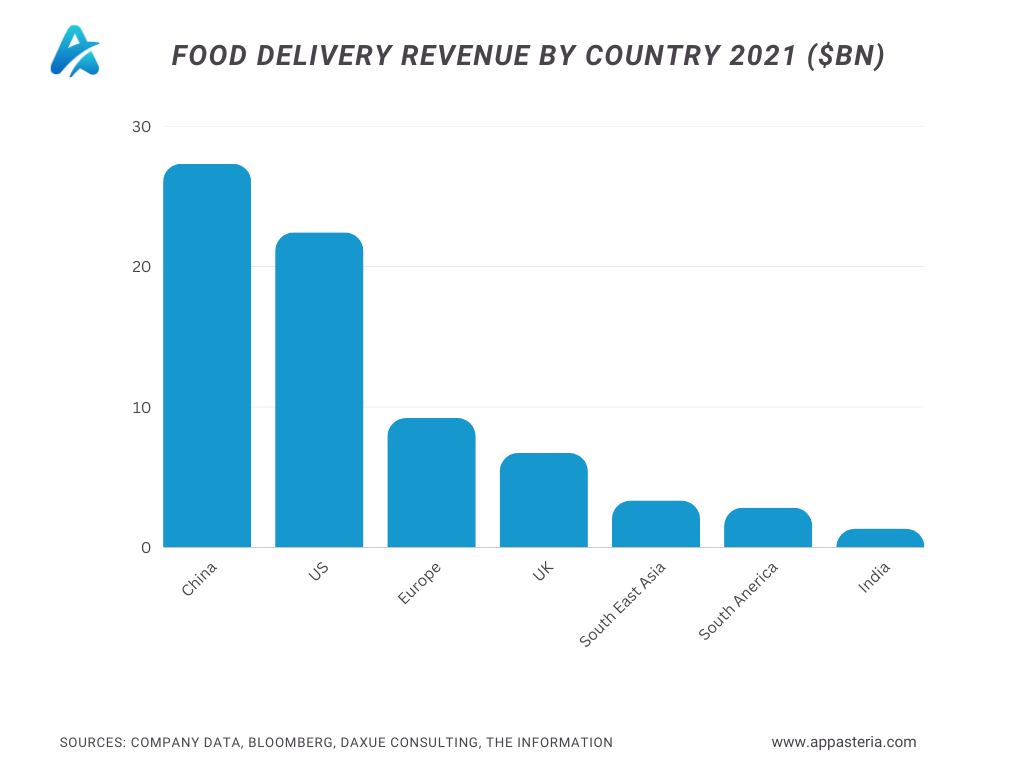
As of 2021, the online food industry’s revenue exceeded $302,826 million and was expected to keep expanding. This growth revolution was particularly accelerated in 2020. When restrictions on movement compelled people to stay indoors and deprived them of the opportunity to dine out or buy groceries physically. Therefore, the question arises, “How do you begin?” This article aims to give businesses a comprehensive understanding of the essential elements of Food Delivery App Development.

Business Models for Food Delivery Apps:
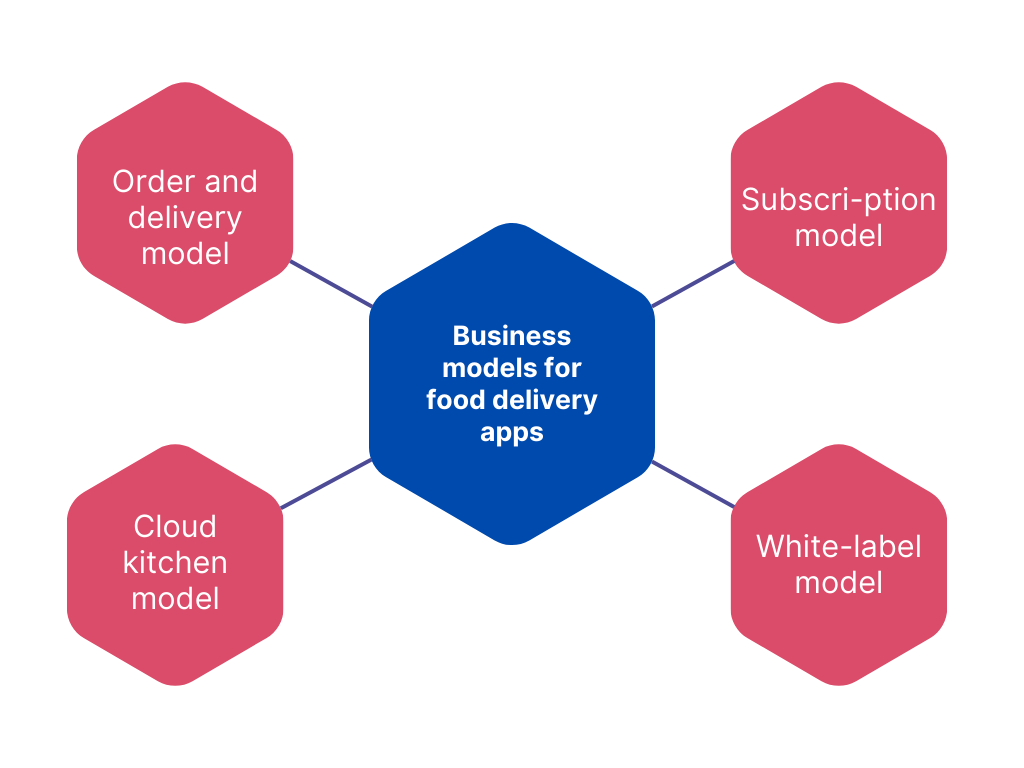
- Order and delivery model: The food delivery app is an intermediary between the customer and the restaurant. The customer orders through the app, which notifies the restaurant to prepare the food. The app then arranges for a courier to pick up the foodstuffs and deliver them to the customer. The app charges a commission fee to the restaurant for each order.
- Cloud kitchen model: Cloud kitchens only prepare food for delivery. In this model, the food delivery app owns or operates a network of cloud kitchens. Customers place their orders through the app, and the food is prepared and delivered from one of the cloud kitchens. This model allows food delivery apps to offer a broader range of cuisine options and reduces overhead costs compared to traditional restaurants.
- Subscription model: Customers pay a monthly or yearly subscription fee to access exclusive discounts, free delivery, or other perks. Food delivery apps often use this model to retain loyal customers and generate recurring revenue.
- White-label model: In this model, the food delivery app provides its technology and services to restaurants and other businesses to create its own branded food delivery app. The restaurant pays a fee to use the app, and the food delivery app may also charge a commission fee for each order.
The choice of business model depends on the goals, target market, and resources of the food delivery app.
Features
Food delivery apps have become essential for many people who wish to order food from their favourite restaurants and deliver it to their doorstep. Here are some of the main features that most food delivery apps offer:

User Registration and Profile Management
Users can create accounts and manage their details, including delivery addresses, payment methods, and order history.
Search and Filter Options
Users can browse restaurants and filter search results based on cuisine, location, price, and ratings.
Menu and Ordering System
The app displays the restaurant’s menu and allows users to select the desired items. Users can customize their orders by choosing special instructions, toppings, or sides.
Payment Gateway
The app integrates with various gateways to facilitate secure and seamless online transactions. Users can pay using credit/debit cards, digital wallets, or other payment methods.
Order Tracking and Delivery Updates
The app updates the order status, including when it is prepared, picked up, and delivered.
Ratings and Reviews
Users can rate and review restaurants and delivery couriers based on their experiences.
Loyalty and Referral Programs
The app may offer loyalty or referral programs to incentivize users to order frequently and refer their friends.
Customer Support
The app may offer various customer support channels, such as chatbots, phone, or email support, to resolve any issues or queries that users may have.
Client-Side
Client-side features of food delivery app development refer to the features visible and accessible to the end-user or the customer using the app. Some of the standard client-side features of Delivery App Development include:
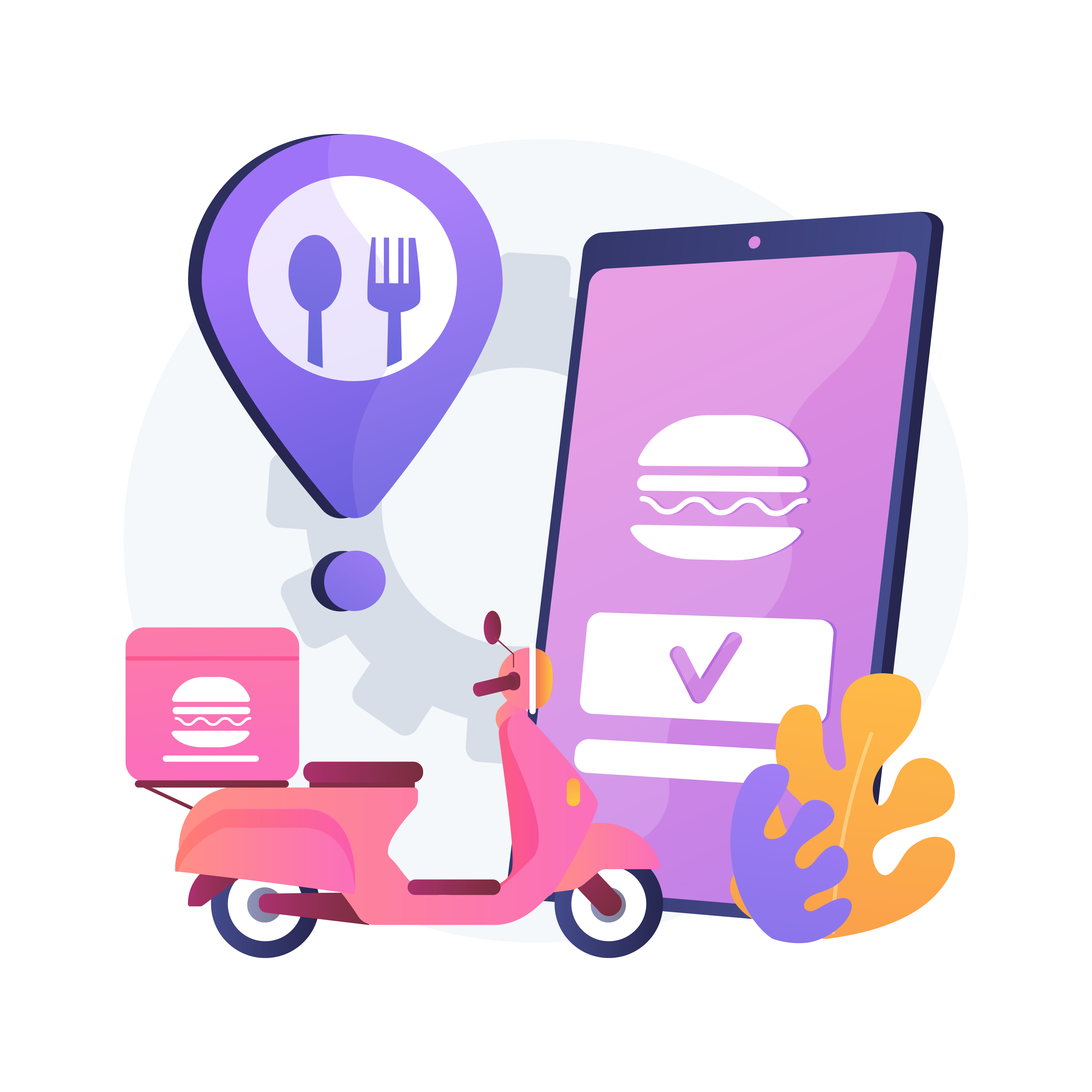
User Interface
The app’s design should be intuitive and user-friendly, making it easy for users to navigate and find what they want.
Registration and Login
Users should be able to create an account and log in using their social media accounts or email addresses.
Location-based Services
The app should use GPS technology to detect the user’s location and provide a list of nearby restaurants and delivery couriers.
Search and Filtering
Users should be able to search for restaurants by cuisine type, location, ratings, and price range.
Menu Browsing and Customization
The app should display the restaurant’s menu, including item descriptions, prices, and images. Users should be able to customize their orders by selecting add-ons or requesting special instructions.
Order Placement and Tracking
Users should be able to place an order and track its status in real-time, from preparation to delivery.
Payment Integration
The app should integrate with various gateways to facilitate secure and seamless transactions.
Feedback and Reviews
Users should be able to rate and review the restaurant and delivery service based on their experiences.
Notifications and Alerts
The app should send messages and alerts to users regarding their order status, estimated delivery time, and other relevant updates.
Customer Support
The app should provide a customer support feature that enables users to contact the support team to assist with their orders or report any issues.
These client-side features are essential for ensuring the end-users a smooth and hassle-free food delivery experience.
Restaurant-Side Features
The Build Food Delivery App refers to the features that are visible and accessible to restaurant owners or managers who use the app. Here are some standard restaurant-side features of the Build Food Delivery App :

Menu Management
Restaurants should be able to manage their menus, including adding, deleting, and updating items, prices, and descriptions.
Order Management
Restaurants should be able to receive and manage orders, including accepting, rejecting, and cancelling them.
Order Preparation Time
Restaurants should be able to set preparation times for each item on the menu to ensure timely delivery.
Order Status Updates
Restaurants should be able to update the order status in real-time, indicating when the order is being prepared, picked up, and delivered.
Restaurant Analytics
The app should provide analytics and insights to help restaurant owners analyze their sales, customer behaviour, and other metrics.
Payment Management
Restaurants should be able to manage their payment methods, view transaction history, and generate invoices.
Loyalty and Reward Programs
Restaurants should be able to create and manage loyalty and reward programs to incentivize customers to order frequently.
Integration with POS System
The app should integrate with the restaurant’s POS (point of sale) system to manage orders and payments seamlessly.
Feedback and Ratings
Restaurants should be able to view and respond to customer feedback and ratings to improve their services.
Customer Support
The app should provide a customer support feature that enables restaurant owners to contact the support team for any issues.
These restaurant-side features are essential for ensuring that restaurant owners can manage their orders and operations effectively and efficiently, providing customers with a seamless and convenient food delivery experience.
Features of an Admin Panel for Build Food Delivery App
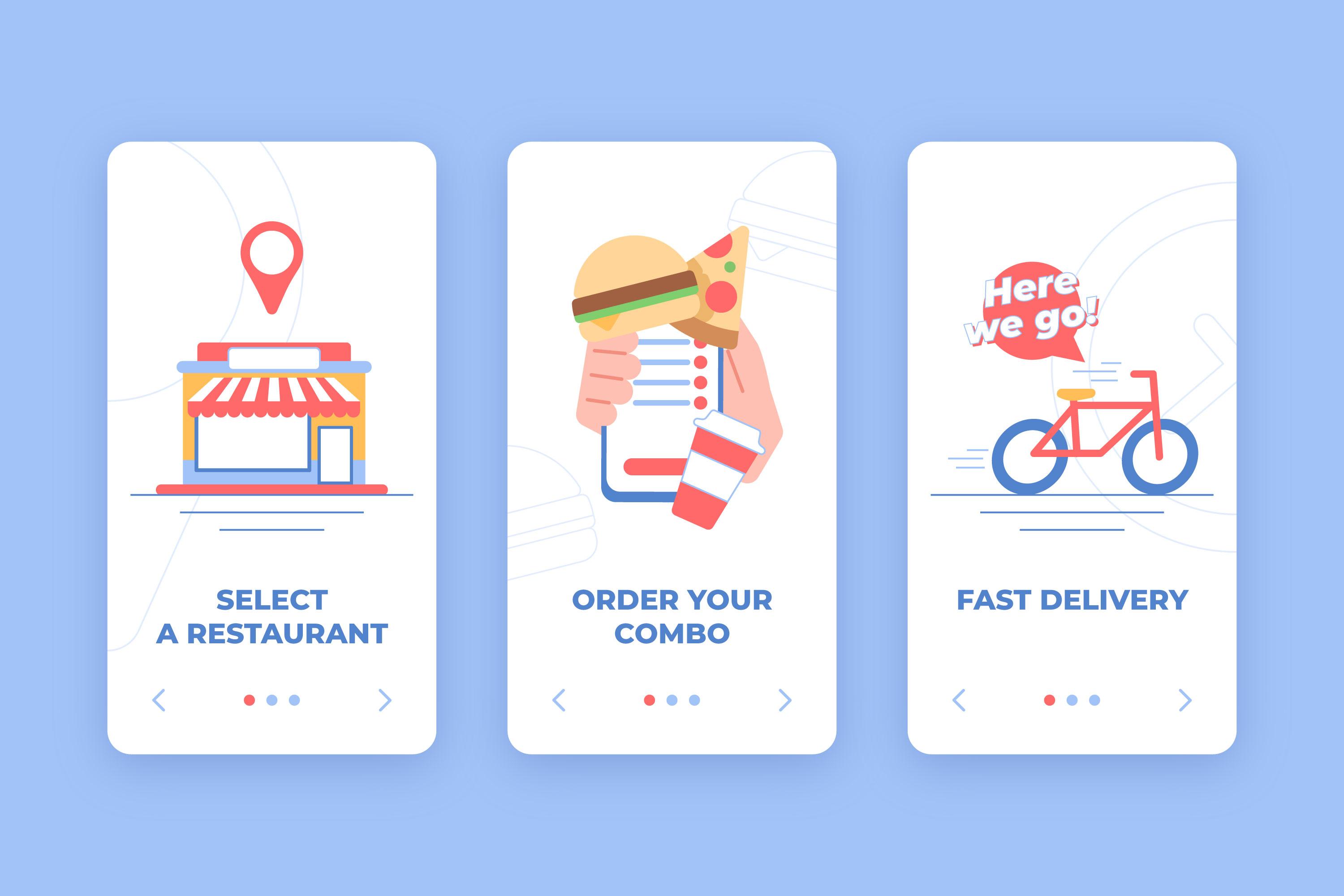
User Management
This feature allows the admin to manage user accounts, including creating new accounts, updating user information, and deleting accounts.
Menu Management
The admin panel should allow the admin to manage the available menu items for users to order. This includes adding new items, updating existing items, and deleting unavailable ones.
Order Management
This feature allows the admin to manage all user orders. The admin should be able to view orders, update their status, and cancel orders if necessary.
Restaurant Management
The admin panel should allow the admin to manage the list of restaurants on the app. This includes adding new restaurants, updating existing restaurants, and removing no longer available ones.
Payment Management
The admin panel should allow the admin to manage user payment methods. This includes adding new payment methods, updating existing payment methods, and removing payment methods that are no longer supported.
Analytics and Reports
The admin panel should provide analytics and reports that allow the admin to track essential metrics such as revenue, order volume, and user engagement. This information can be used to make instructed decisions about the app’s future development.
Customer Support
The admin panel should provide a customer support feature that allows the admin to manage customer inquiries and complaints. This includes responding to customer inquiries and escalating complaints to higher-level support if necessary.
Content Management
The admin panel should allow the admin to manage the content displayed on the app. This includes updating text, images, and other multimedia content.
Promotions and Discounts
The admin panel should allow the admin to create and manage promotions and discounts that are available to users. This can be used to drive user engagement and increase sales.
Delivery Management
The admin panel should allow the admin to manage the delivery process, including assigning delivery drivers to orders and tracking the status of deliveries in real-time.
Features of the Courier Side for Food Delivery App Development
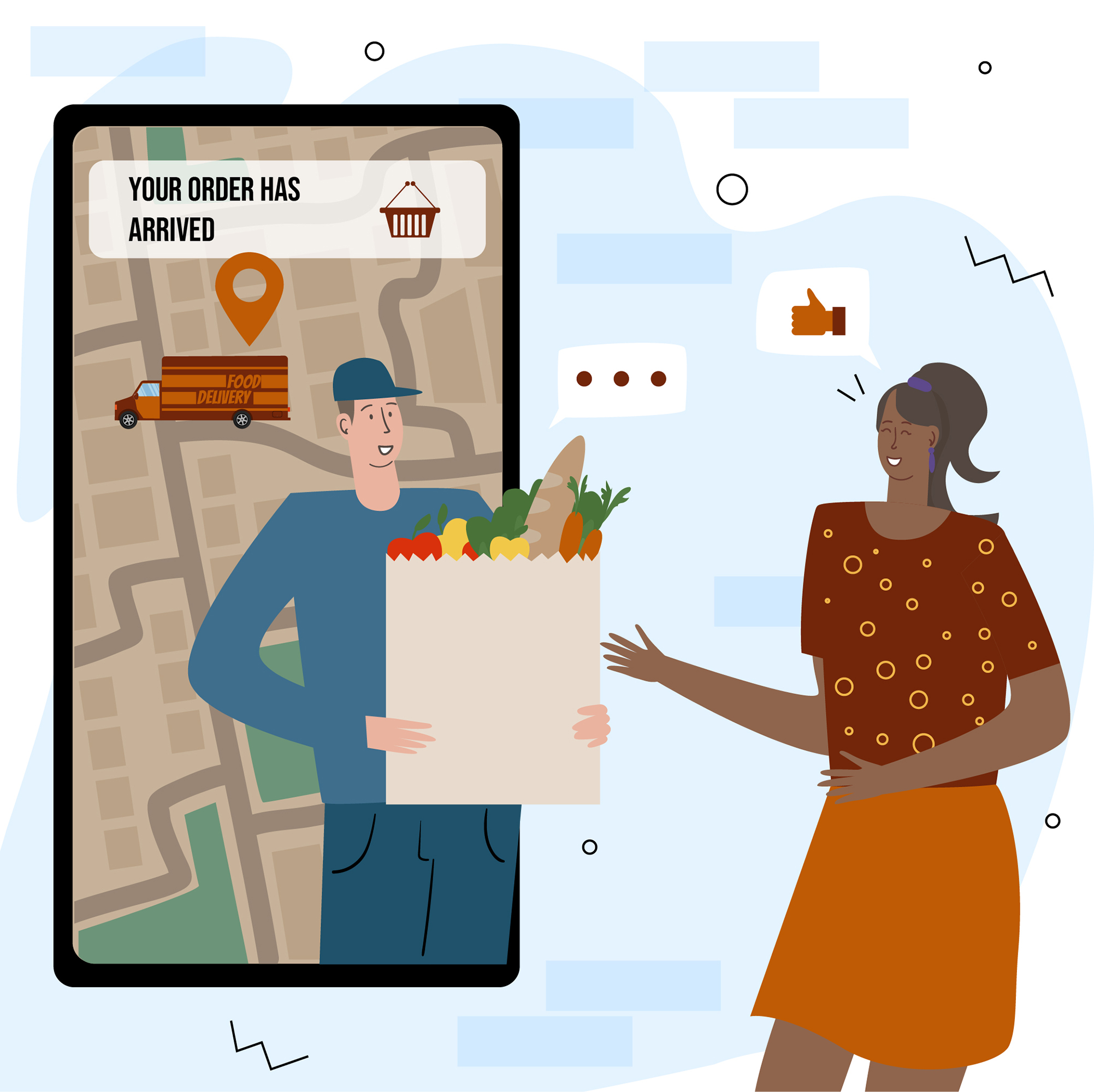
Order Acceptance
This feature allows couriers to accept orders for delivery assigned to them.
Real-Time Tracking
The app should allow couriers to track the location of the order in real-time, so they know exactly where to deliver it.
Order Details
Couriers should be able to view the order details, including the customer’s address, contact information, and special instructions.
Delivery History
Couriers should be able to view their delivery history, including completed orders and any ongoing deliveries they have accepted.
In-App Communication
The app should allow couriers to communicate with the customer if there are any issues or concerns during the delivery process.
Navigation
The app should provide directions to the courier to guide them to the customer’s location.
Delivery Status
Couriers should be able to update the order’s delivery status, including when it has been picked up, in transit, and delivered.
Proof of Delivery
The app should allow couriers to capture evidence of delivery, such as a signature or photo, to confirm that the order has been delivered to the customer.
Availability Management
The app should allow couriers to manage their delivery availability, including setting their working hours and indicating when they are unavailable.
Earnings and Payment
The app should allow couriers to view their earnings and manage payment information, including bank account details or payment preferences.
Tech Stack
The tech stack used in food delivery app development can vary depending on the project’s requirements. However, here are some of the commonly used technologies:
- Front-End Development: React Native, Flutter, Ionic, or Native iOS/Android development
- Back-End Development: Node.js, Ruby on Rails, Python, or Java
- Database: MySQL, PostgreSQL, MongoDB, or Firebase
- Cloud Platform: AWS, Google Cloud, or Azure
- Payment Gateway Integration: Stripe, PayPal, or Braintree
- Push Notifications: Firebase Cloud Messaging (FCM) or Apple Push Notification Service (APNS)
- Map Integration: Google Maps, Mapbox, or Here Maps
- Analytics and Tracking: Google Analytics or Firebase Analytics
- SMS Gateway Integration: Twilio or Nexmo
- DevOps: Docker, Kubernetes, or Jenkins
It’s worth noting that many food delivery apps use third-party APIs and services for various functionalities, such as delivery tracking or payment processing. The choice of technology stack should be based on factors such as scalability, performance, and ease of development and maintenance.
Also Read (Tech Stack For App Development)
Food Delivery App Development Cost
The expenditure of developing a food delivery app can vary depending on various aspects, such as the app’s complexity, the characteristics and functionalities needed, the platform on which the app is built, and the development team’s hourly rate.
Here’s a rough estimate of the cost of developing a food delivery app
Basic App
A basic food delivery app can cost around $15,000 – $20,000. This app would have essential features like menu listings, order tracking, payment integration, and customer support.
Mid-Level App
A mid-level food delivery app with more advanced features, such as push notifications, loyalty programs, and social media integration, could cost around $25,000 – $40,000.
Advanced App
An advanced food delivery app with real-time tracking, chatbot support, and AI-based personalization could cost around $50,000.
Also, Read (Ecommerce App Development Cost)
The phase of Development
Food Delivery App Development Services can be divided into several phases, each crucial for the app’s success. Here are the typical stages of food delivery app development that are used according to the requirements:
- Idea and Concept Development
- Research and Planning
- Design
- Development
- Launch
- Maintenance
Food Delivery App Development Monetization
There are several ways to monetize a food delivery app. Here are some standard methods:
Commission-based Model
In this model, the food delivery app charges a commission from the restaurant or food vendor for every order placed through the app. The commission rate is usually a percentage of the order value.
Delivery Fees
Another way to monetize a food delivery app is by charging delivery fees from customers for the food delivery service. The costs can be fixed or vary based on the delivery distance.
Advertising
Food delivery apps can generate revenue by displaying ads from restaurants, food brands, or other related services. The app can charge advertisers based on the number of views, clicks, or conversions.
Subscription-Based Model
In this model, the food delivery app charges a subscription fee from the customers for exclusive benefits such as free delivery, discounts, early access to new restaurants or dishes, and other perks.
Sponsored Listings
Food delivery apps can also offer sponsored listings to restaurants or food vendors for better visibility in the app’s search results. The sponsored listings can be charged based on the duration or the number of clicks.
It’s important to note that the monetization strategy should be aligned with the app’s target audience, market, and business goals. Also, it’s crucial to balance revenue generation with user experience and value proposition to retain customers and ensure long-term success.
Also, Read (Fintech App Development Cost)
Food Delivery App Development Process
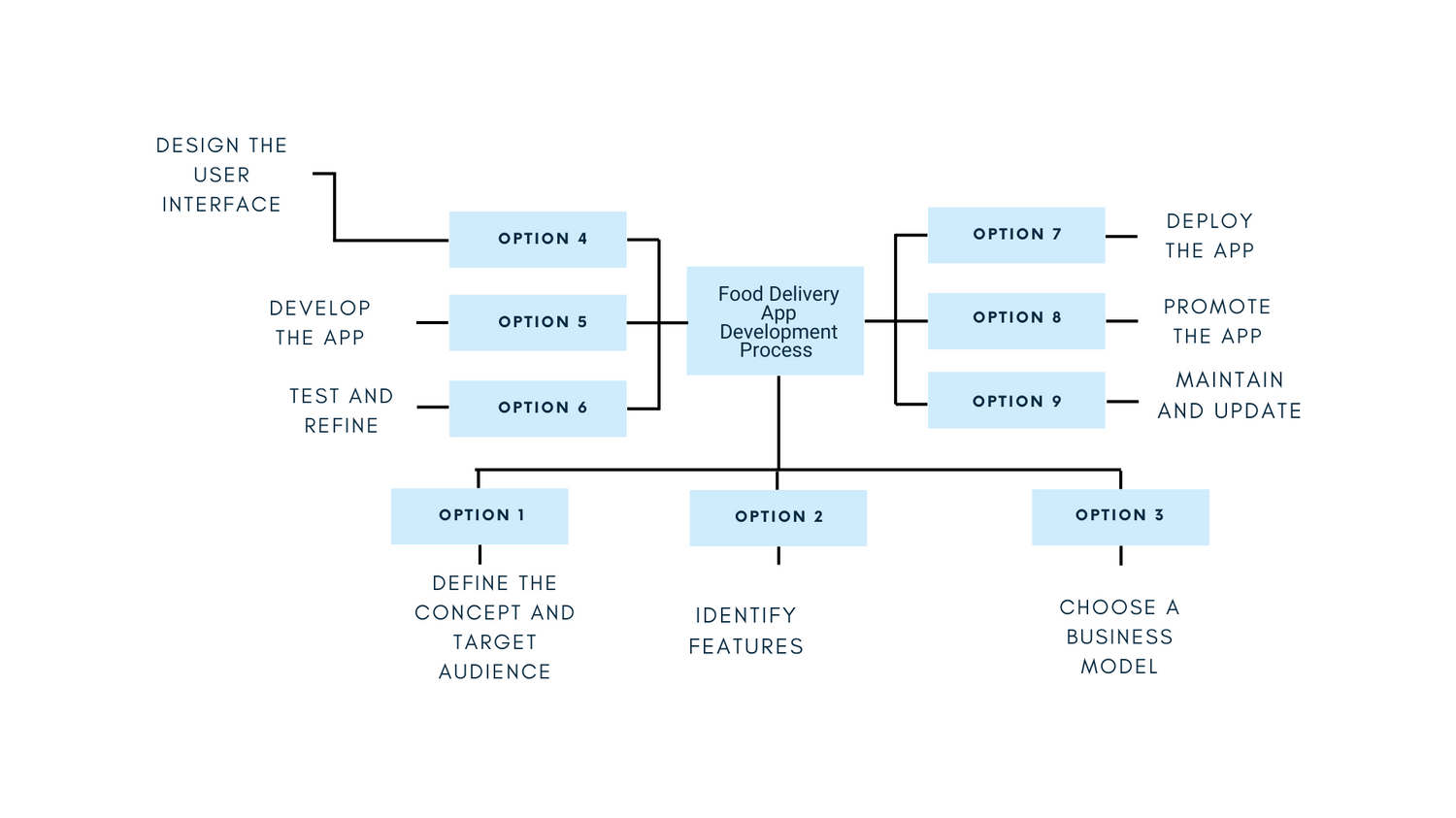
Define the Concept and Target Audience
Defining your app’s idea and target audience is crucial before developing. Conduct market research to understand your audience’s preferences and behaviour, such as their favourite cuisines, ordering habits, and location.
Choose a Business Model
Several business models for food delivery apps include commission-based, subscription-based, and hybrid models. Choose a model that aligns with your app’s goals and target audience.
Identify Features
Based on your app’s concept and target audience, identify the key elements that your app must have. These may include menu listings, order tracking, payment gateway integration, customer support, etc.
Design the User Interface
A user-friendly interface is essential for the success of any app. Hire a professional designer to create a visually appealing, intuitive interface that aligns with your brand identity.
Develop the App
Hire experienced developers to build the app’s back-end and front-end. Consider using a framework or platform like React Native, Flutter, or Ionic to speed up the development process.
Test and Refine
Once the app is built, thoroughly test it to identify and fix bugs or issues. Gather feedback from beta testers and refine the app based on their suggestions.
Deploy the App
Publish the app on app stores like Google Play and the App Store. Ensure that the app complies with its guidelines and policies.
Promote the App
Promote your app through various channels, such as social media, email marketing, and paid advertising, to attract users and increase downloads.
Maintain and Update
Regularly update and maintain the app to fix bugs, add new features, and improve the user experience. Please keep track of user feedback and address their concerns promptly.
Creating a food delivery app requires a significant investment of time and resources, but it can be a lucrative business with the potential for high returns.
Also, Read ( How Does Education App Development Cost in India)
Wrapping Up
The food delivery app market, similar to Uber Eats, is expected to undergo continuous growth and evolution. Thus, now is the opportune time to capitalize on your Android or iOS food delivery app idea. Reach out to Appasteria to explore food delivery app development and create your version of Uber tailored to food delivery. Appasteria’s skilled software developers can provide their food delivery app development expertise if you require assistance.
FAQs
What are the Essential Features that a Food Delivery App Should Have?
The essential features that a food delivery app should have include the following:
- User registration and login
- Menu browsing
- Order placement and tracking
- Payment gateway integration
- Delivery Tracking
- Ratings and reviews
- Push notifications
- Customer support
How Long Does it Take to Develop a Food Delivery App?
The time to develop a food delivery app depends on several factors, such as the app’s complexity, the number of features, and the development team’s experience. However, developing a typical food delivery app can take 4-6 months.
What is the Cost of Developing a Food Delivery App?
The cost of developing a food delivery app varies depending on several factors, such as the development team’s experience, the complexity of the app, the number of features, and the location of the development team. However, developing a typical food delivery app can cost around $50,000 to $100,000.
How can I Ensure Customer Data Security in a Food Delivery App?
To ensure the security of customer data in a food delivery app, you should use encryption to protect sensitive information such as payment details and personal information. Use secure servers to store customer data and regularly update your app to fix security vulnerabilities.
Can I Integrate my Food Delivery App with Third-Party Services?
You can integrate your food delivery app with third-party services such as payment gateways, mapping, and customer support services. However, you should ensure these services are secure and reliable and comply with your app’s terms and conditions.

